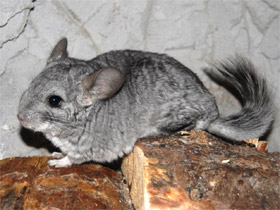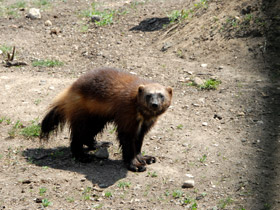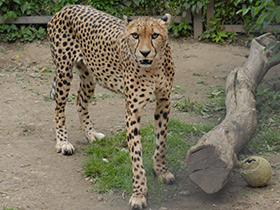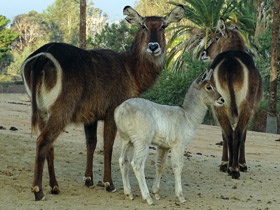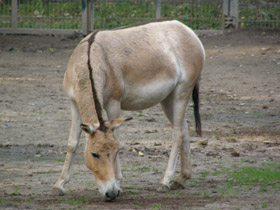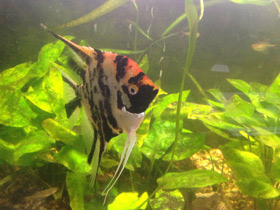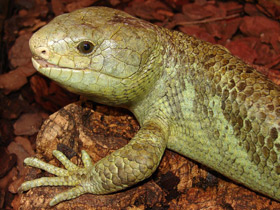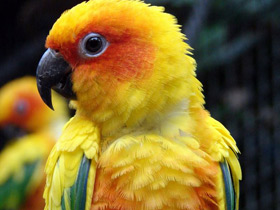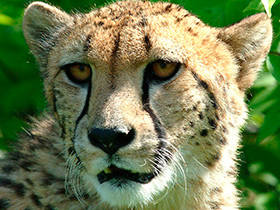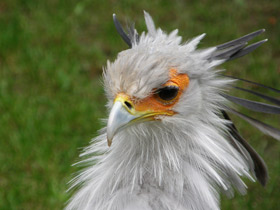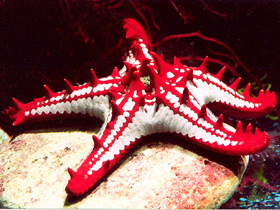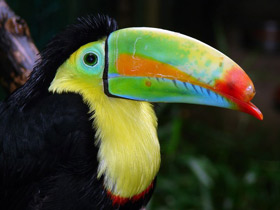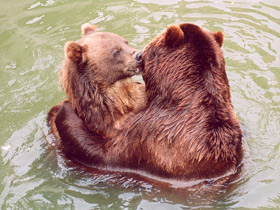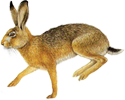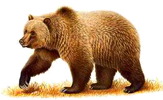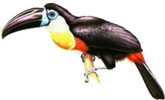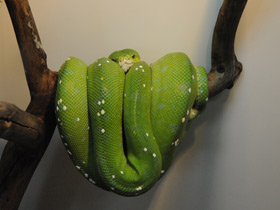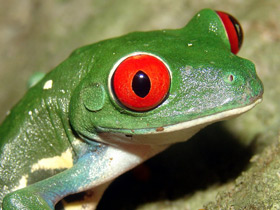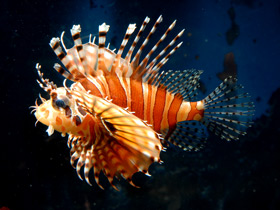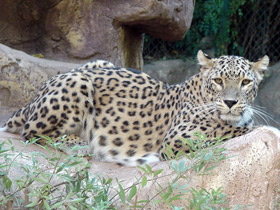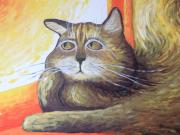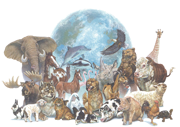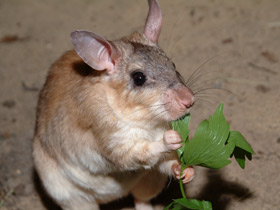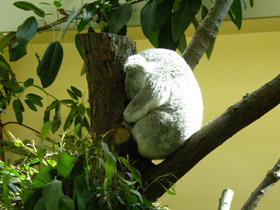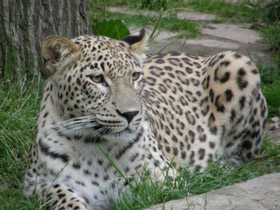Long-tailed chinchilla Chinchilla lanigera
The long-tailed chinchilla (also called the Chilean, or lesser chinchilla) occurs in Aucó, near Illapel, IV Región in the north of Chile. About half of all wild animals are found in the nature reserves, and 5,000 chinchillas live in unprotected private areas. Long-tails chinchillas inhabit barren, arid, and rugged areas of the mountain chains at elevations of 400 to 5,000 meters above sea level. Chinchillas live in rocky areas, sheltering in caves and crevices; where natural shelters are not available, chinchillas would dig burrows. The long-tailed chinchilla is a relatively small animal: its body length ranges from 23 to 38 cm and weight is 0.5 to 1 kg. This rodent has a round head, short neck, and quite long tail (8-15 cm) covered in course guard hairs. Chinchillas are sexually dimorphic, with adult females being larger than males and weighing up to 800 grams, while male weights do not exceed 500 g. Chinchillas are perfectly adapted to nocturnal life; they have large black eyes with vertical pupils, long vibrissae (8-10 cm), and rounded ears. Chinchillas are able to naturally squeeze into small holes and crevices in the rocks. Their forefeet have five digits; four of them are prehensile, and one is rarely used. Hind feet have four digits, with one of them being directed backwards. Strong hind limbs in the chinchilla are twice as long as the front limbs; hind limbs are more important in locomotion, allowing for high leaps, while highly developed cerebellum contributes to the coordination and precision of the movements.
Long-tailed chinchillas are omnivorous. Their diet in the wild consists of plants (mainly legumes and cereal grasses), roots, and various grasses, as well as seeds, lichens, mosses, bushes, tree bark, and small insects.
Humans started using chinchilla fur more than thousand years ago. The chinchilla received its name from the Spanish; they named it after the Chincha Indians who had used the fur of these animals. In time, the Chinchas were conquered by the mighty and aggressive Inca Indians who adopted Chinchas’ techniques of fur clothing production. Chinchilla fur became the fur of the Inca Royalty and adorned only those Incas who were of noble birth. Researchers have found that the Incas not only hunted chinchillas but attempted captive breeding of these animals. After the Incas were conquered by the Spaniards, thousands of chinchillas were trapped for the Madrid royal court; unique fur clothes were produced of chinchillas: fur coats, collars, decorations for luxurious robes, coat linings, pelerines, and mantles. As time passed, chinchilla-fur fashion spread over other European countries and into North America. Great demand for chinchilla fur in the world fur market drastically affected wild populations of the long-tailed chinchilla. Population dynamics can be demonstrated by the official data on the export of chinchilla pelts from Chile (figures mean the numbers of pelts per year): 184,548 in 1885; 435,463 in 1899; 314,100 in 1904; 152,863 in 1910; and 3,202 in 1915. In 1918, the governments of Chile, Peru and Bolivia outlawed the exportation of pelts and prohibited trapping but the harm was already done: wild populations of the long-tailed chinchilla were put under the treat of extinction. In 1918, Mathias F. Chapman, a mining engineer working for the Anaconda Copper Company, became acquainted with this beautiful animal. Mr. Chapman was shocked at the destruction of the chinchilla population, and became fascinated with the idea of trapping enough animals alive so that he might bring them to the United States and raise them in captivity as the means of actually saving the species. Finally, the Chilean Government issued the license for trapping a small number of chinchillas. 17 animals were totally trapped, and on February 22, 1923, eleven of these animals reached San Pedro, California. Those first chinchillas (8 males and 3 females) were housed in the breeding farm in Los Angeles and became the founders of captive population of the chinchilla. One of the animals, a male, lived to be about 22 years old. He was nicknamed Old Hoff, for the German blacksmith who built the shipping cages used to transport Mr. Chapman’s chinchillas to the United States. In the early 1980-s, the chinchilla industry grew to a profitable business. In the end of the last century, chinchilla breeders found a new market: more and more people in various countries fascinated by the chinchilla keep these animals as pets.
In the wild, chinchillas live in colonies, with a male and a female forming monogamous pair; the males usually participate in offspring raising activity. As a result of domestication, chinchillas are now kept at the farms in polygamous groups with the sex ratio of 4-6 females to one male. The male which mated with several females takes care of the offspring of all females.









